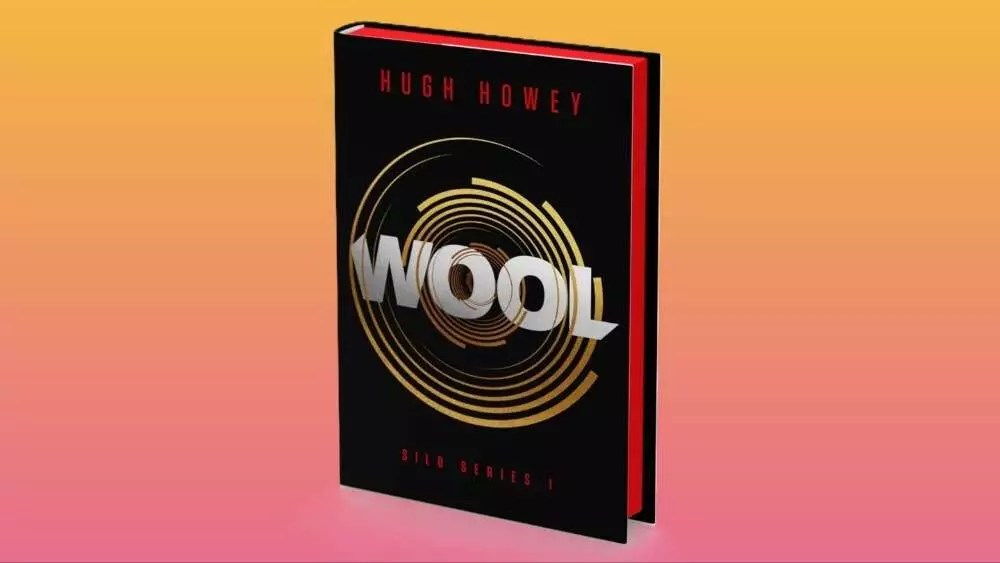The anticipation surrounding the second season of Apple TV’s dystopian sci-fi series, Silo, is palpable, especially with its premiere landing on November 15. This exciting return does not merely signal the revival of a beloved TV show but also heralds a resurgence of interest in the literary roots of the series, which is based on Hugh Howey’s exceptional trilogy.
The adaptation of Silo into a television series has brought renewed attention to Howey’s original work, particularly with the recent release of a special hardcover edition of “Wool,” the first book in the trilogy. Released on November 12, the “Wool Collector’s Edition” is now available on Amazon for a noteworthy 25% discount, priced at only $30. The aesthetic enhancements—such as the reversible jacket, red sprayed edges, and illustrated endpapers—make this edition a collector’s dream. It not only caters to long-time fans but also invites new readers into Howey’s intricately crafted world, offering a fresh opportunity to experience a narrative that has resonated since its original self-publication in 2011.
Additionally, Amazon’s ongoing promotions, including the “Buy Two, Get One Free Book Sale,” extend the reach of the Silo saga. However, while the new hardcover edition of “Wool” isn’t part of this promotion, readers can still explore bundled offers, including a box set that contains all three novels in paperback form at an attractive price. This blend of accessibility and quality is crucial in attracting a diverse readership and sustaining interest in the series.
The popularity of Howey’s work coincides with a broader trend of thriving science fiction and fantasy literature in contemporary publishing. Notably, the box set available for “Silo,” priced at $34.49, becomes especially appealing as it features a selection of works that resonate within the same genre. Aspiring readers looking to discover or expand their library will find numerous box sets available in the promotional sale, including works from well-known authors such as J.R.R. Tolkien and Brandon Sanderson.
Newcomers to Apple TV+ can also explore the series through a free seven-day trial, ensuring they can dive straight into the critically acclaimed first season. This strategy not only amplifies viewer access but also capitalizes on the buzz generated by season two’s release, ensuring that the foundation laid by the original work translates into a successful television adaptation.
At its core, “Wool” is a compelling narrative set in a dystopian reality where humanity clings to survival within an underground silo, the world outside rendered inhospitable. The tale’s protagonist, Juliette, ascends to the role of sheriff under turbulent circumstances, igniting a relentless pursuit for truth amid a conspiracy that threatens to reshape her reality. This essence of struggle against oppressive forces reflects the fundamental themes that resonate with audiences today, bridging the gap between literature and modern sociopolitical concerns.
Moreover, Howey’s journey from self-publishing to mainstream success epitomizes the transformative power of storytelling. His decision to release “Wool” in serialized chunks speaks to the historical traditions of literary publications, reminiscent of authors like Charles Dickens. This modern approach facilitated widespread readership and led to a distribution deal, thus cementing “Wool” as an early success story on the Kindle platform.
As the Silo series unfolds its second season, it brings with it the weight of audience expectation and the rich tapestry of narrative possibilities laid down in the original novels. The premium treatment of Howey’s trilogy, particularly through this new hardcover edition, underscores the significance of adapting literature for modern audiences, blending technological advancements in publishing with the timeless nature of epic storytelling.
The emergence of the second season of Silo not only signifies a pivotal moment for the television landscape but also activates a cultural moment where literature and screen adaptation coexist. Howey’s compelling narrative continues to captivate audiences, ensuring that both readers and viewers remain engaged in a fascinating dialogue about humanity’s persistent search for hope amid despair and the power of resilience.


Leave a Reply